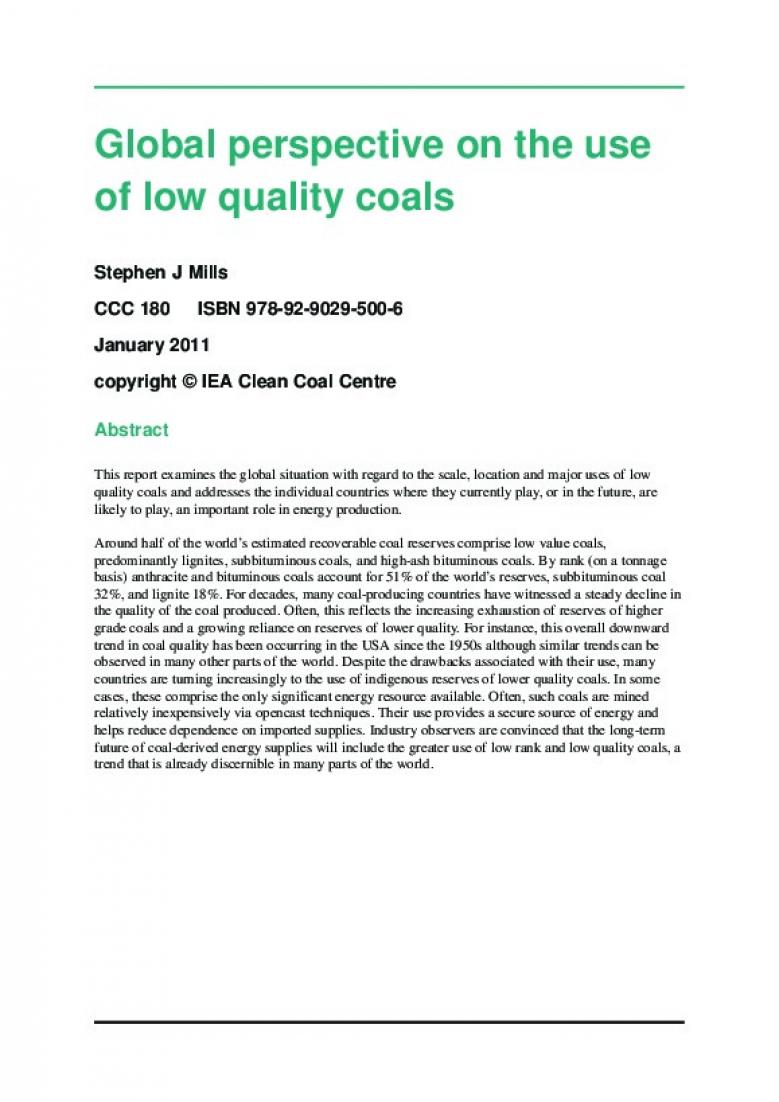Stephen J Mills
CCC 180 ISBN 978-92-9029-500-6
January 2011
copyright © IEA Clean Coal Centre
Abstract
This report examines the global situation with regard to the scale, location and major uses of low
quality coals and addresses the individual countries where they currently play, or in the future, are
likely to play, an important role in energy production.
Around half of the world’s estimated recoverable coal reserves comprise low value coals,
predominantly lignites, subbituminous coals, and high-ash bituminous coals. By rank (on a tonnage
basis) anthracite and bituminous coals account for 51% of the world’s reserves, subbituminous coal
32%, and lignite 18%. For decades, many coal-producing countries have witnessed a steady decline in
the quality of the coal produced. Often, this reflects the increasing exhaustion of reserves of higher
grade coals and a growing reliance on reserves of lower quality. For instance, this overall downward
trend in coal quality has been occurring in the USA since the 1950s although similar trends can be
observed in many other parts of the world. Despite the drawbacks associated with their use, many
countries are turning increasingly to the use of indigenous reserves of lower quality coals. In some
cases, these comprise the only significant energy resource available. Often, such coals are mined
relatively inexpensively via opencast techniques. Their use provides a secure source of energy and
helps reduce dependence on imported supplies. Industry observers are convinced that the long-term
future of coal-derived energy supplies will include the greater use of low rank and low quality coals, a
trend that is already discernible in many parts of the world.
| Attachment | Size |
|---|---|
| 689.26 KB |


